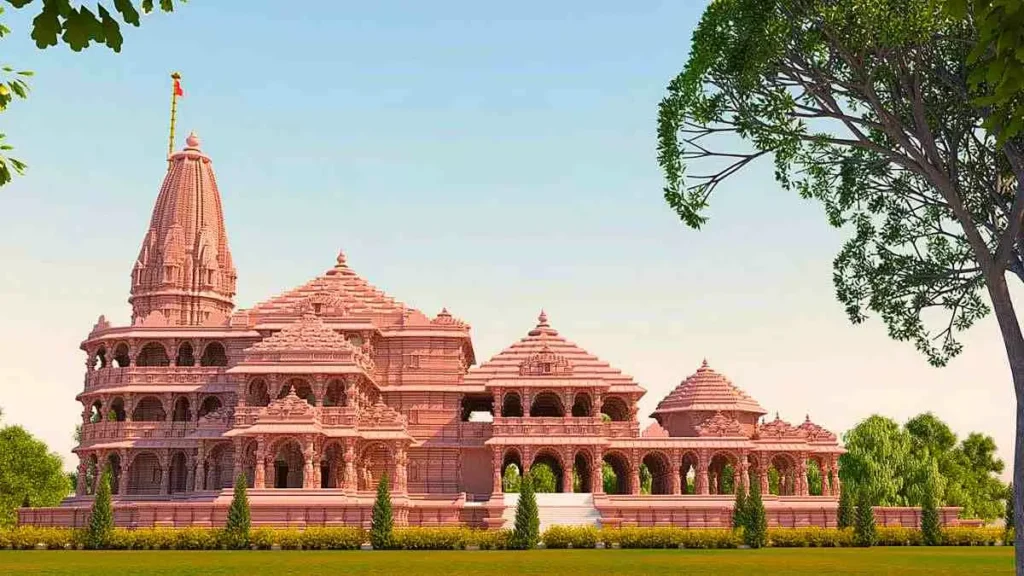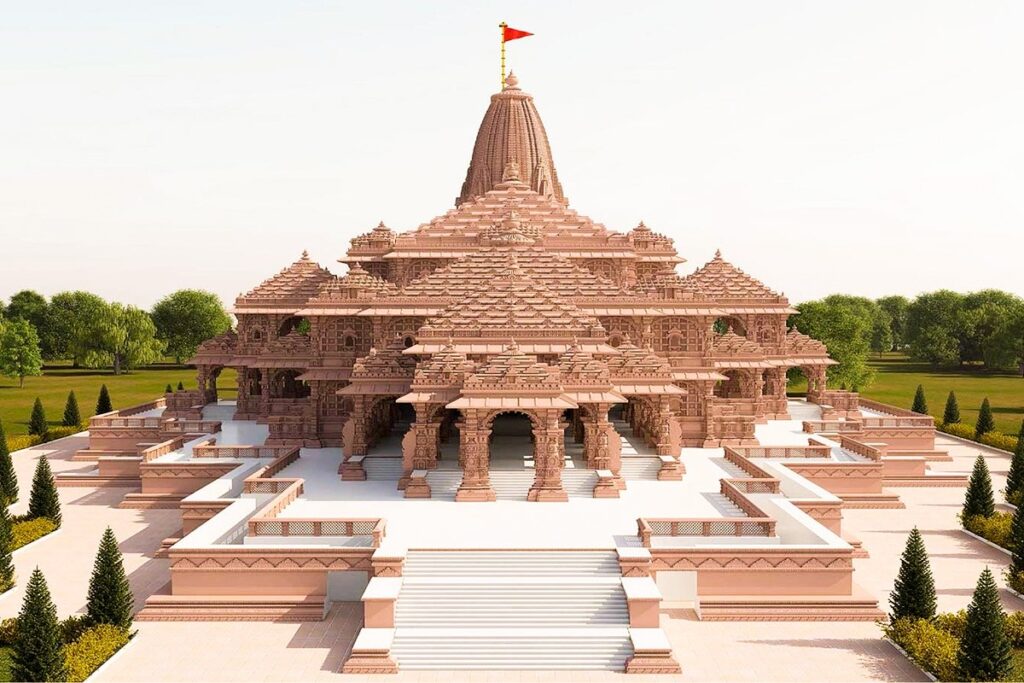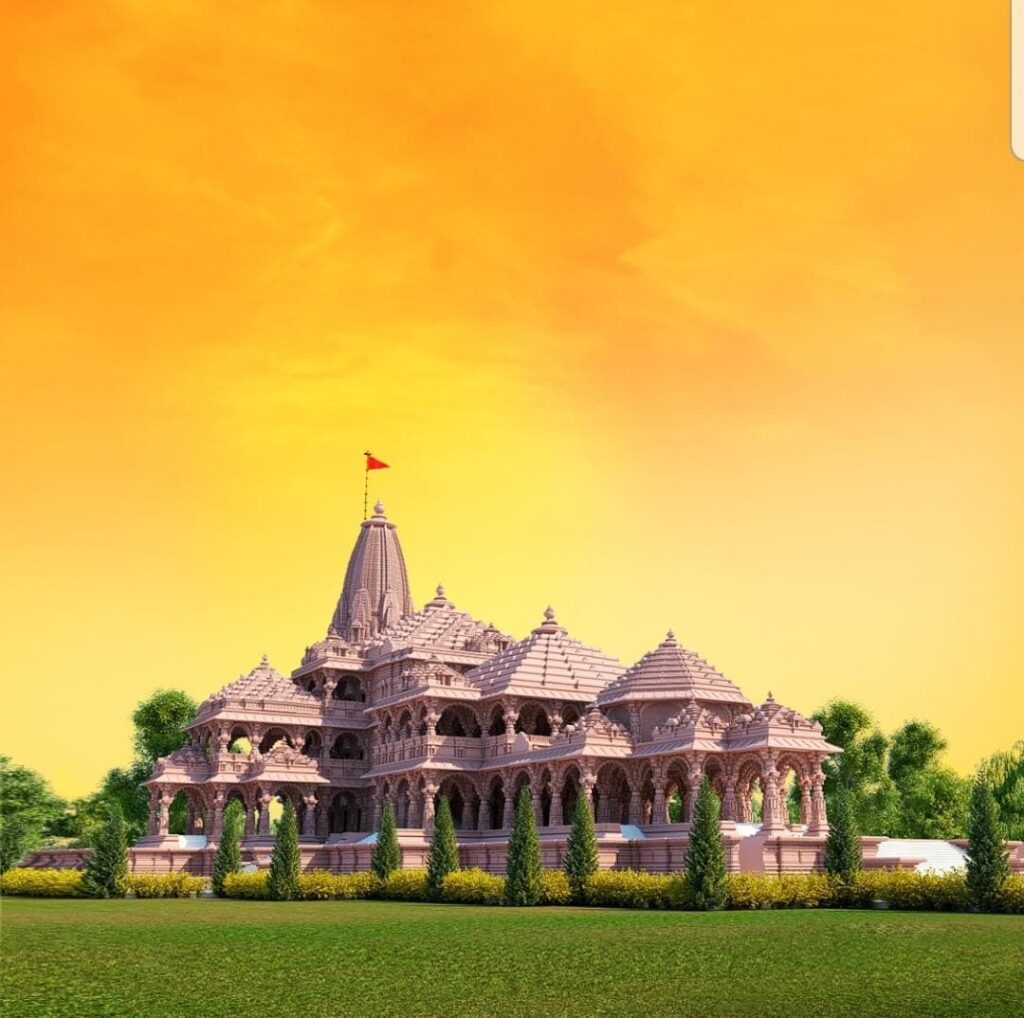Ayodhya Ram Mandir Photo
Ayodhya Ram Mandir Photo – 1

Ayodhya Ram Mandir Photo – 2

Ayodhya Ram Mandir Photo – 3

The Ayodhya Ram Mandir is not just a physical structure; it represents centuries of faith, devotion, and the cultural identity of millions of Hindus around the world. Located in the ancient city of Ayodhya, Uttar Pradesh, India, the Ram Mandir is dedicated to Lord Ram, an avatar of Lord Vishnu and a revered deity in Hinduism. The temple has been the subject of intense religious, political, and historical discourse for decades, making it one of the most significant temples in India.
In recent years, as the construction of the Ram Mandir nears completion, the demand for Ayodhya Ram Mandir photos has surged. These photos encapsulate the architectural beauty, historical significance, and spiritual essence of the temple, making them highly sought after for personal worship, social media, and as symbols of devotion. This article will explore the significance of the Ram Mandir, its historical background, the different types of Ayodhya Ram Mandir photos, and how these images play a crucial role in fostering spiritual connection and cultural pride.
Contents
- 1 Historical Significance of the Ayodhya Ram Mandir
- 2 The Ayodhya Ram Mandir: Architectural Marvel and Spiritual Symbol
- 3 Why Ayodhya Ram Mandir Photos Are So Popular
- 4 Types of Ayodhya Ram Mandir Photos
- 5 The Role of Ayodhya Ram Mandir Photos in Promoting Spiritual Tourism
- 6 How to Use Ayodhya Ram Mandir Photos
- 7 Conclusion: The Timeless Appeal of Ayodhya Ram Mandir Photos
Historical Significance of the Ayodhya Ram Mandir
To fully appreciate the significance of the Ayodhya Ram Mandir photos, one must first understand the temple’s historical context. The Ram Mandir has been at the heart of religious and cultural narratives in India for centuries. According to Hindu belief, Ayodhya is the birthplace of Lord Ram, the hero of the ancient Indian epic, the Ramayana. The Ramayana narrates the story of Lord Ram’s life, his exile, the abduction of his wife Sita by the demon king Ravana, and his eventual victory over evil, symbolized by his triumph in rescuing Sita.
The Ayodhya Ram Mandir stands on what is believed to be the exact site of Lord Ram’s birth, known as the Ram Janmabhoomi. For centuries, Hindus have considered this site sacred, and it has been a pilgrimage destination for devotees. However, the site has also been a source of intense conflict, as it was once home to the Babri Masjid, a mosque built in the 16th century by the Mughal emperor Babur.
The mosque’s construction on the Ram Janmabhoomi site led to a prolonged dispute over the land, with Hindus advocating for the construction of a temple dedicated to Lord Ram. After years of legal battles and political tensions, the Supreme Court of India ruled in 2019 that the land belonged to Hindus, paving the way for the construction of the Ram Mandir. This ruling marked a historic moment for millions of devotees, and the temple’s construction is now seen as a fulfillment of their long-held aspirations.
The Ayodhya Ram Mandir: Architectural Marvel and Spiritual Symbol
The Ayodhya Ram Mandir is designed to be a magnificent architectural marvel, combining traditional temple architecture with modern construction techniques. Spanning over 70 acres, the temple complex will feature intricate carvings, sculptures, and stunning architectural details that reflect the grandeur of ancient Indian temples.
The temple’s design is inspired by Nagara-style architecture, a traditional form of temple architecture that is characterized by its towering shikhara (spire) and ornate carvings. The main structure will feature a towering spire over the sanctum sanctorum, where the idol of Lord Ram will be enshrined. The temple’s outer walls will be adorned with intricate carvings depicting scenes from the Ramayana, as well as other deities and symbols from Hindu mythology.
As construction progresses, Ayodhya Ram Mandir photos have become a way for devotees and admirers to witness the temple’s transformation. These photos capture the beauty of the temple’s architecture, the grandeur of its scale, and the deep spiritual significance it holds for millions of people.
Why Ayodhya Ram Mandir Photos Are So Popular
In today’s digital age, the visual representation of faith is more accessible than ever. Ayodhya Ram Mandir photos have become widely popular for several reasons, including their spiritual significance, aesthetic appeal, and the cultural pride they evoke. Here are some key reasons why these photos are in high demand:
- Spiritual Connection: For millions of Hindus, the Ram Mandir is a sacred site that represents their devotion to Lord Ram. Photos of the temple serve as a visual reminder of their faith and help them feel connected to the divine. Whether used as wallpapers on smartphones or displayed in homes and offices, these images bring a sense of peace and devotion into everyday life.
- Cultural Pride: The Ram Mandir is not just a religious symbol; it is also a cultural icon that represents the perseverance and aspirations of Hindus. The long struggle to reclaim the Ram Janmabhoomi site and the eventual construction of the temple is seen as a victory for the Hindu community. Ayodhya Ram Mandir photos encapsulate this sense of cultural pride, making them a source of inspiration for people around the world.
- Architectural Beauty: The Ram Mandir’s design is a testament to the skill and craftsmanship of Indian architects and artisans. The temple’s intricate carvings, grand spire, and detailed sculptures are captured beautifully in photographs, making these images visually appealing. For those interested in architecture, these photos offer a glimpse into the beauty of traditional Indian temple design.
- Festivals and Celebrations: During major Hindu festivals such as Ram Navami, Diwali, and Dussehra, Ayodhya Ram Mandir photos become even more significant. These images are widely shared on social media, used in digital greetings, and displayed in homes as part of the festivities. The photos serve as a way for people to express their devotion and celebrate the life and legacy of Lord Ram.
- Digital Devotion: In today’s tech-savvy world, people are increasingly using digital platforms to express their faith. Ayodhya Ram Mandir photos are often shared on platforms like WhatsApp, Instagram, Facebook, and Twitter, allowing devotees to share their spiritual journey with friends and family. These images are also commonly used as wallpapers on smartphones, adding a touch of devotion to everyday digital interactions.
Types of Ayodhya Ram Mandir Photos
The variety of Ayodhya Ram Mandir photos available reflects the many aspects of the temple, its architectural splendor, and its spiritual significance. Here are some common types of photos that devotees and admirers seek:
- Construction Phase Photos: As the temple is still under construction, many photos capture the different stages of the building process. These images show the temple’s gradual transformation from a construction site to a magnificent place of worship. For devotees who have been following the temple’s progress for years, these photos serve as a testament to the fulfillment of a long-awaited dream.
- Aerial Views: Aerial photos of the Ram Mandir offer a unique perspective on the temple complex, showcasing its size and layout. These images capture the grandeur of the temple’s design and the vastness of the surrounding landscape. Aerial views are particularly popular for their ability to convey the temple’s architectural scale and the harmony of its design with the natural environment.
- Close-ups of Architectural Details: The Ram Mandir’s intricate carvings and sculptures are some of its most stunning features. Close-up photos of these details highlight the craftsmanship that has gone into creating the temple. These images often focus on specific elements such as the temple’s ornate pillars, the detailed carvings on the outer walls, or the beautifully sculpted deities that adorn the temple’s facade.
- Photos of Lord Ram’s Idol: The central focus of the Ram Mandir will be the idol of Lord Ram, which will be enshrined in the sanctum sanctorum. Photos of this idol are highly sought after, as they represent the spiritual heart of the temple. These images are often used for personal worship, shared on social media during religious festivals, and displayed in homes as a symbol of devotion.
- Night-time Illuminations: Photos of the Ram Mandir at night, when the temple is illuminated with thousands of lights, are particularly awe-inspiring. These images capture the temple’s beauty in a different light, showcasing its grandeur and spiritual ambiance in a way that is both visually striking and deeply moving.
- Panoramic Views: Panoramic photos of the Ram Mandir complex provide a comprehensive view of the temple and its surroundings. These images are ideal for capturing the full scale of the temple and are often used in publications, websites, and digital platforms to showcase the temple’s grandeur.
The Role of Ayodhya Ram Mandir Photos in Promoting Spiritual Tourism
The construction of the Ayodhya Ram Mandir has also led to a significant increase in spiritual tourism. Millions of devotees from across India and the world are expected to visit the temple once it is completed. Ayodhya Ram Mandir photos play a crucial role in promoting spiritual tourism by showcasing the beauty and significance of the temple to a global audience.
Tourism websites, travel blogs, and social media platforms are already filled with stunning images of the temple, inviting people to experience its spiritual and architectural splendor firsthand. For those who may not be able to visit the temple in person, these photos offer a way to connect with the temple’s spiritual essence from afar.
How to Use Ayodhya Ram Mandir Photos
Ayodhya Ram Mandir photos can be used in various ways to enhance your spiritual practice, celebrate festivals, or simply appreciate the beauty of the temple. Here are some suggestions:
- Home Decor: High-quality prints of Ayodhya Ram Mandir photos make excellent additions to your home decor. Whether displayed in your living room, prayer room, or office, these images can serve as a constant reminder of your devotion and bring a sense of peace and spirituality to your space.
- Digital Wallpapers: One of the most popular uses for Ayodhya Ram Mandir photos is as digital wallpapers for smartphones, tablets, and computers. Having an image of the temple as your wallpaper can help you stay connected to your faith throughout the day.
- Social Media Sharing: Sharing Ayodhya Ram Mandir photos on social media platforms is a great way to express your devotion and inspire others. Whether during festivals, religious events, or special occasions, these images can be shared with friends and family to celebrate the beauty and significance of the temple.
- Personal Worship: Many devotees use Ayodhya Ram Mandir photos as part of their personal worship rituals. Whether placed in a home altar or used as a focal point during meditation, these images can help create a sacred space for prayer and reflection.
Conclusion: The Timeless Appeal of Ayodhya Ram Mandir Photos
The Ayodhya Ram Mandir is a symbol of devotion, cultural pride, and architectural brilliance. As the temple nears completion, Ayodhya Ram Mandir photos have become a way for people to connect with its spiritual essence, celebrate its historical significance, and appreciate its architectural beauty. Whether used for personal worship, shared on social media, or displayed as part of home decor, these images serve as a powerful reminder of the enduring legacy of Lord Ram and the temple that honors him.
In a world where digital connections are increasingly important, Ayodhya Ram Mandir photos offer a way for devotees to express their faith, share their spiritual journey, and stay connected to the divine in their everyday lives.
